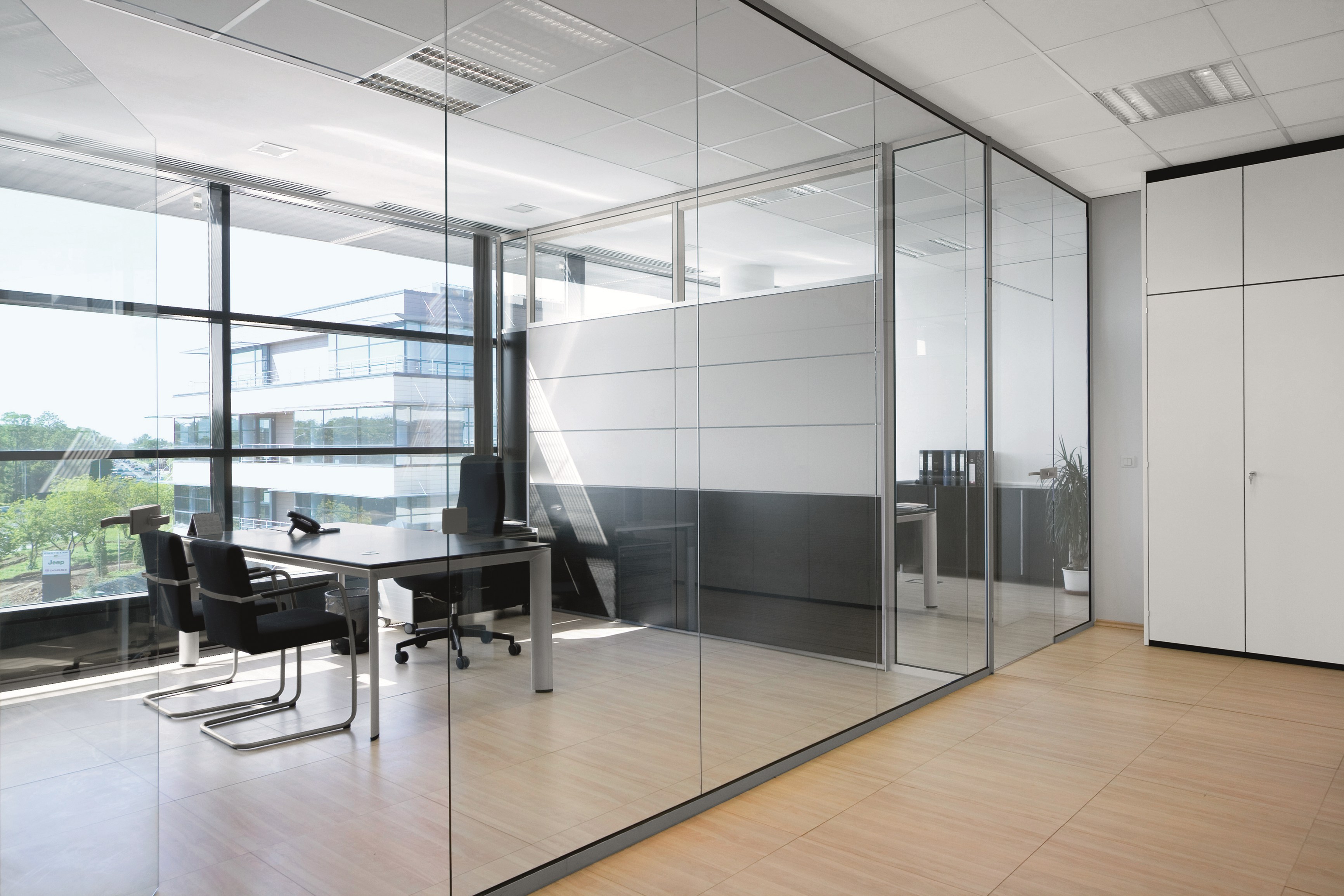Many Los Angeles area office remodels are now featuring glass office walls and doors as part of their tenant improvement construction. But why is interior glass now the hottest material in office renovations and construction? What are the selling points and the negatives to the see-through office? We break it all down in this blog post.
Glass Office Walls Give the Appearance of Openness
Throughout the last decade, the average size of office space has decreased by 30%. Real estate data provider CoreNet Global cites the average square foot per office employee at 151 square feet. That’s down from 2012’s average of 176 square feet per worker.
Interior glass enables office tenants to reduce space while still giving the illusion of openness. It helps make a small space look bigger.
Glass Office Walls Allow for Greater Flexibility
Demountable interior glass gives office tenants or property managers more flexibility when it comes to reconfiguring spaces. Reconfiguration is sometimes necessary to accommodate either a company that’s growing or changing or a building owner needing to be responsive to tenant shifts.
Although drywall-constructed walls initially cost significantly less than interior glass, glass office walls add more value to the space. They may also be more economical in the long run with much less environmental impact.
Glass Office Walls Enhance Worker Collaboration
Glass office walls and doors make it easier for workers to approach and talk to each other. Additionally, some interior glass systems allow for information to be written or projected onto them.
Both of these things further enable the flow of ideas, which sparks creativity, facilitates brainstorming, and leads to greater collaboration.
Glass Office Walls Improve Moods, Attitudes, & Environment
Traditional office space is often dimly-lit by overhead flourescent lights, closed-off, and can feel like a dungeon. This type of work environment can understandably impact the moods, attitudes, and emotions of workers. This can lead to employees being disatisfied with their jobs, decreased productivity, and ultimately high rates of employee turnover.
Glass office walls and doors don’t restrict the natural light coming through windows like cubicle walls do. Natural lighting office renovations have been proven to result in happier workers.
Combine this with the enhanced collaboration between employees and you have workers that feel more positive about their jobs, work environment, and who they work for.
So What Are the Cons of Glass Office Walls?
Now that we’ve provided some of the selling points of adding interior glass to an office space, let’s discuss some of the negatives.
Acoustical & Privacy Concerns
A glass-enclosed room must include noise-absorbing materials like area rugs, carpet tile, or wall fabric to minimize echo. To increase an office’s acoutisics and privacy, the joints of any glass wall should also be sealed.
Worker privacy is also a concern. Glass partitions and doors can sometimes be unsettling to employees who might feel as if they’re in a fish bowl and always being watched.
Different types of films can be applied to the interior glass to add some degree of privacy or prevent information on computer screens or projected slideshow presentations from being seen.
There is also the more expensive option of different types of laminated glass, switchable glass where the panes darken electronically on demand, and translucent glass available in an array of colors, patterns, and prints.

